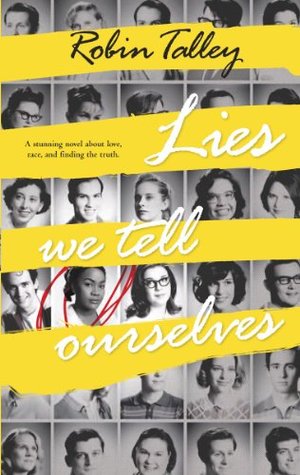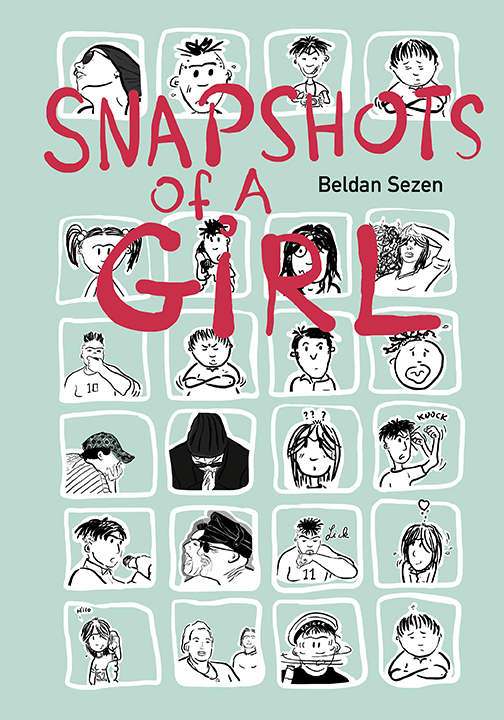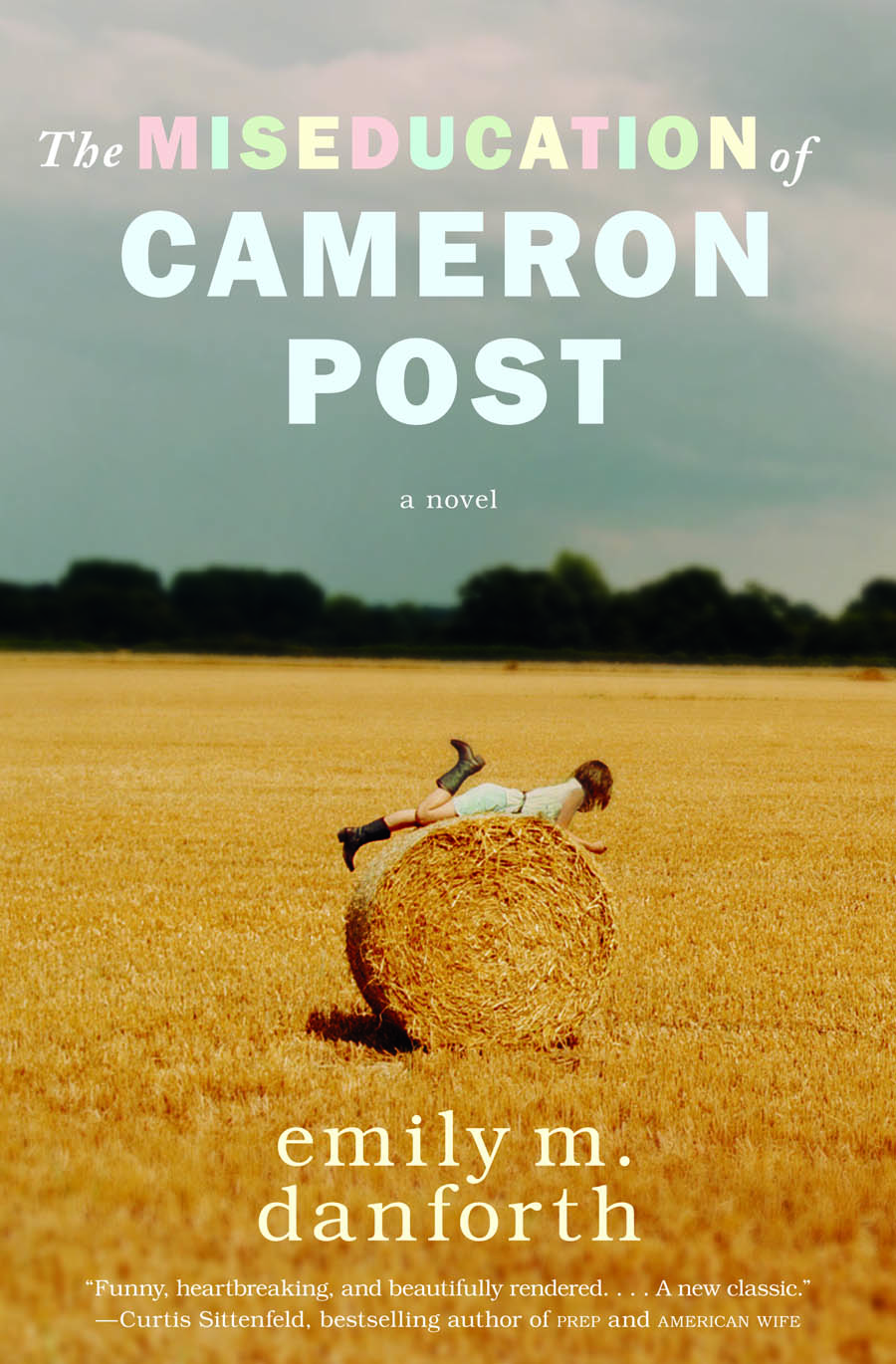This is a powerful book. Lies We Tell Ourselves is about Sarah, one of the first black kids to integrate into a formally all-white school in Virginia, 1959. The other main character is Linda, the daughter of a staunchly segregationist public figure. The two find themselves inexorably drawn to each other.
The premise alone was enough to make me immediately want to pick this one up: an interracial teen lesbian romance in the 1950s? That is not something I’ve read about before, and I’m glad that we’ve gotten to the point where it’s something that can be traditionally published. Immediately the book throws us into the reality of Sarah’s experience. It begins with the ten black students attempting to fight their way through a screaming mob of white protesters to enter the high school, an unending litany of racial slurs, insults, chants, and threats. Sarah attempts to keep her head up during this daily assault by white students and faculty, enduring countless humiliations while trying to get an education.
One of her tormentors is Linda, and I was unpleasantly surprised to have the narration switch to her perspective less than 100 pages into the book. Linda is an interesting character, because though she may not be immediately likeable, she does feel realistic. It’s a look into the mind of, well, a racist of the 1950s. She parrots what her father espouses, despite the fact that she fears and resents her father. And throughout the book, her views do change, but they are excruciatingly small steps in the right direction, still firmly in racist territory.
My immediate thoughts during Sarah and Linda’s growing to each other was How could Sarah like this girl?? Though Linda may not have been the one throwing rocks, she still actively participated in Sarah and other black students’ torments. While they meet in secret after being assigned to a school project together, Sarah and Linda get into passionate debates about integration and other issues around race. Sarah doesn’t bat an eyelash at Linda’s regurgitation of racist beliefs. But at the same time, I realized that it actually does make some sense. For one thing, Sarah feels completely isolated. She is the only black female senior in the school, and that means that there’s no one going through her exact situation that she can talk to. Her parents don’t seem to grasp just how bad things are at school, and her white classmates won’t even sit within two desks of her, nevermind talk to her. Having someone she can be herself with, can say exactly what’s on her mind to, would be a relief, even if that person didn’t understand. I also, of course, have to take into account that Sarah is still a teenager, falling for someone for the first time. She’s not the first person to see her love interest with rose-coloured glasses and think that she’s capable of change. Add to that the confusions of falling for a girl in 1950s America and it actually seems pretty realistic.
Linda seems like an ambiguous character by the end of the book. Are we supposed to like her? Are we supposed to sympathize with her? She makes progress, but it’s only a small bit of progress. She makes sacrifices, but are they really enough to counteract the damage she’s done? Her attitudes and actions may be understandable (given her upbringing), but that doesn’t make them excusable. As much as I cringed reading Linda’s thoughts, I do think I appreciate her inclusion in the book as a representative of the opposition of integration, and of the people on the other side of the battle for civil rights. Because Talley represents her as not a one-dimensional caricature or a monster, but a flawed person. And I think that’s important because it shows how important it is to be aware of your own position in terms of power, privilege, and oppression. It’s easy to be complacent, to go along quietly with the status quo.
I did have one major issue with the book, however. [spoilers, highlight to read] The violence against a black boy, Chuck, seems to be used just as a plot point in Sarah and Linda’s relationship. Specifically, the moment when Linda announced angrily, complete with racial slur, in front of a large group of people, that Chuck had been with a white girl–something she did spitefully just because he insulted her singing, was the moment where I couldn’t imagine how Linda could ever come back from that. I don’t believe that she was so naive that she didn’t know how a crowd of white people would react to that. In fact, it seems like that’s exactly why she said it. And to say something in anger that could get him lynched? I don’t know how Sarah could ever forgive her for that. I couldn’t, as a reader. And the fact that her corresponding action to make up for it was to write a newspaper article saying “I still don’t support integration, but maybe a crowd of white boys shouldn’t beat a black boy nearly to death just for being black? I think that’s wrong.” does not come close to making that okay. The violence done against Chuck just seemed to be a point of drama between Linda and Sarah, instead of its own horror. And especially given the ongoing legacy of this violence that we can see today, I was disappointed with how it was handled in text. There was even an undertone of “Well, he should have known better to get involved with a white girl, and it was bound to happen even if Linda didn’t say anything.” This element dropped the book from getting a five star rating to four stars for me. [end spoilers]
This was a fantastic read. It manages to tackle a lot of big issues without seeming like there were too many balls in the air, and it adds a lot of nuance to the topics presented. For instance, I appreciated Sarah’s struggle with her religious beliefs, and how her Christianity acted as both a source of strength and also a source of anxiety for her. I also thought it was interesting how though Sarah believed completely in the cause, she began to feel as if her and her black classmates were being used as pawns in this civil rights battle fought by her parents, especially in relation to Linda being a pawn of her father. Sarah and her younger sister, Ruth, also have different experiences at the school and handle it differently.
The most powerful part for me was the “Lies We Tell Ourselves” motif throughout the book. Each chapter is titled “Lie #_: ____” For example, Sarah’s first lie is “There’s no need to be afraid” and Linda’s first lie is “None of this has anything to do with me.” Generally my eyes skip right over chapter titles, but these were so interesting that I made sure to make note of them. They serve multiple purposes: Why does each girl tell themselves this, and how does it help or hurt them? How is it a lie? How does it apply to the other girl? They were also so relateable, though obviously I’ve never gone through anything comparable to Sarah’s experience. But some of them apply to being queer and coming to terms with it, and some are lies that I think all of us have told ourselves at some point, for one purpose or another. This is definitely a book that I would recommend, though it’s not an easy read. I found myself having to put down the book for a while when my stomach was in knots reading some parts. It also has racial slurs on almost every page. If you can get through that, however, I think Lies We Tell Ourselves is well worth the read, and a fantastic addition to the YA genre.





caseythecanadianlesbrarian says
So, is the author white or black?? For better or for worse, this always colours my view of anything I feel is an issue in the book. If the author’s white, I’m not likely to give them the benefit of the doubt.
Danika @ The Lesbrary says
Yeaah, the author is white, which is the reason for my kind of skeptical tone while reading/reviewing.